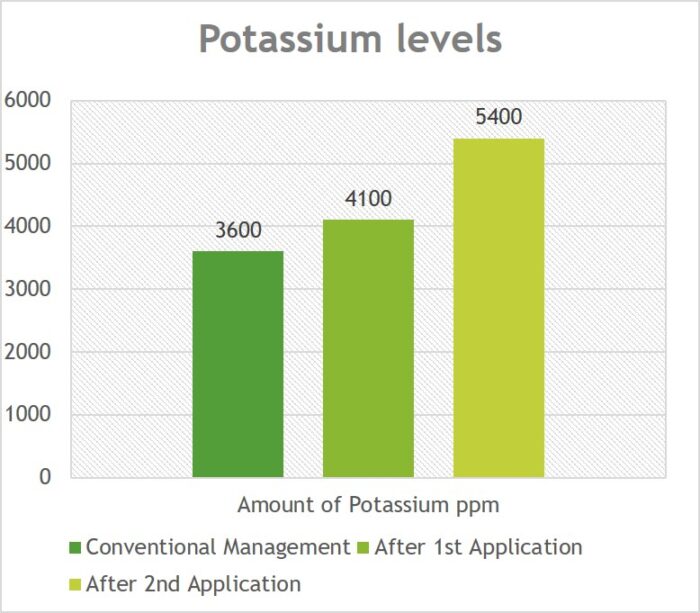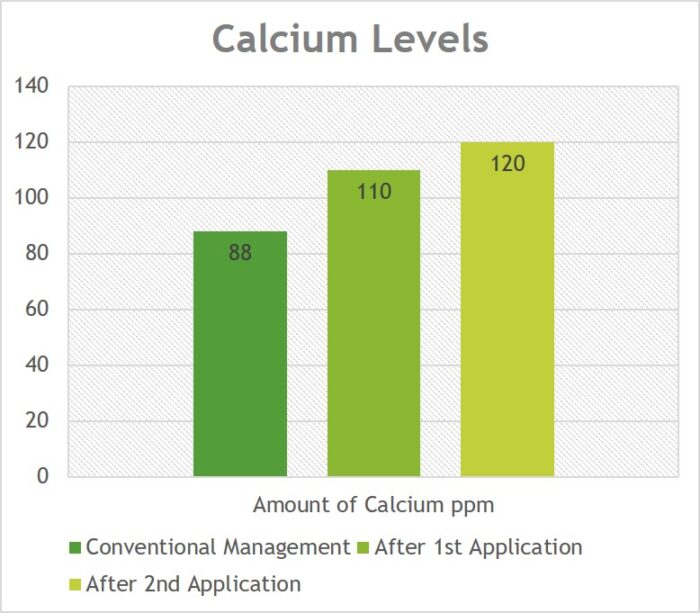
A program of two weekly applications was established to measure Ca and K levels in Raspberry cultivation.
Applications were allocated to an area in harvest where there is increased demand for calcium and potassium by the plant, elements that improve the quality of the fruit until the end of the growing cycle.
With the use of OMEX CalMax Super & OMEX K41 we achieved higher levels of calcium and potassium at the stage of greatest demand for these elements within the plant, which leads us to standardize the quality of the harvested raspberries.

OMEX K41 was applied at 5ml/litre at one week intervals

OMEX CalMax Super was applied at 5ml/litre at one week intervals
Main functions of Calcium
Form – taken up as ionic Ca2+ Calcium is essential for cell division and development of the active root and shoot tips. Calcium plays a central role in plant structure both above and below ground.
Function – Calcium is vital for activating enzymes that promote growth and stimulate immune system responses. In addition, Calcium acts as a binding agent that is essential to the structure of stems, roots and fruits. Low Calcium status results in low vigour, slow development of shoot and root, reduced nutrient recovery and increased biotic stress.
Symptoms – low Calcium status affects rapidly expanding tissue such as new leaves, roots and developing fruit. Meristems fail to expand and growing points become necrotic. Leaf scorch, tip burn and blossom end rot are classic symptoms of low Calcium status, all of which are worse during conditions that promote rapid growth.
Significance – as mobility within the plant is very low, Calcium demand can readily exceed supply, creating stress can restrict leaf, root and fruit development. As Calcium is only taken up by a very small fraction of new roots, anything that restricts root development will affect Calcium uptake.
Main functions of Potassium
Form – taken up as cationic K+ Potassium is central to the production of carbohydrate and the movement of both water and nutrients through the plant.
Function – Potassium influences canopy expansion, water uptake and the set, size and sugar content of fruit. In addition, leaf Potassium levels can influence Nitrogen metabolism, plant structure and tolerance to drought. Low Potassium status can result in poor disease resistance.
Symptoms – often termed “Hidden Hunger” as plants fail to thrive, Potassium stress is typically seen on the leaf tips and margins of older leaves, which turn from green to yellow, eventually becoming brown and necrotic. Plants tend to be slower growing, lax and more prone to heat/water stress.
Significance – Potassium stress tends to affect plant development and yield building from flowering onwards, leading to poor fruit set with low dry matter and sugar production. Potassium is required in the largest amount of any nutrient and soil supply often fails to meet plant demand, especially during periods of heat stress. Potassium stress is often worse in alkaline soils or following applications of Magnesium-based lime or fertiliser.
Actions – check soil status and correct if necessary. Time fertilisers to match plant demand. Foliar treatments from flowering onwards, or in response to symptoms can be very effective in maintaining plant growth and health
If you require any further information please: CONTACT US
